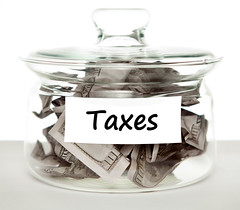1. Contribute to your tax-advantaged accounts: One of the best ways to cut your tax bill is to reduce your taxable income. It is important to take advantage of any retirement-plan contributions you can make to reduce your taxable income. You can contribute $17,000 to your 401(k) plan in 2012, and those age 50 or older can save an additional $5,500. Consider ratcheting up your contribution before the end of the year if you're on pace to fall below that contribution limit.
Some taxpayers might also be able to contribute up to $5,000 to a traditional IRA (individuals 50 and older can contribute $6,000), and you'll be able to deduct that contribution from the income you report on your tax return. Keep in mind that in order to be eligible for a traditional deductible IRA, your income must come in below a certain threshold. Please be sure to consult the IRS Web site (www.irs.gov) or a financial professional for detailed information.
2. Beware of ticking tax time bombs: Have you had any big mutual fund winners in your portfolio? If so, there's a very good chance that they'll be making capital gains payouts later this year—which means you could wind up owing taxes on those gains. If you were planning to purchase any one of these funds, it would be wise to wait until after they've made their distributions for the year. That way, you won't be responsible for taxes on gains you weren't around to enjoy.
Many fund shops begin making capital gains distribution estimates available later in October and into November, and capital gains payouts typically occur in December. If your fund company doesn't list this information anywhere on its website, call to find out whether your fund is planning a distribution, how much it will be, and when it will occur. And remember, past performance is no guarantee of future results.
3. Harvest your losers: Selling losing investments and reinvesting the money in investments that are similar in style might allow investors to maintain their long-term asset allocation and enjoy the benefits of a potentially lower tax bill. Although long-term investors know that it is better to buy and hold than to try timing the market, there are times when selling and taking losses could be worthwhile. For instance, if an investor suffers losses from a large-cap stock fund, she can sell it at a loss to offset other capital gains she might have and then reinvest the money in another large-cap stock fund to maintain the asset allocation. Federal tax laws allow capital gains to be offset dollar for dollar with realized capital losses.
4. Taxable versus non-taxable accounts: Pay attention to which funds are in your taxable and non-taxable accounts. To the extent that you own taxable bonds and bond funds, particularly high-yield offerings (such as junk-bond and emerging-markets bond funds), be sure to hold them in your tax-sheltered accounts. The same applies for high-turnover stock funds that generate a lot of short-term capital gains.
5. Be generous: If you contribute to a charity, your generosity could come in handy come tax time. If you itemize deductions, you can deduct charitable contributions; just be sure to save receipts and canceled checks as proof. And if you're helping those near and dear to you, remember that you can contribute up to $13,000 per year per recipient in 2012 without triggering gift tax.
Tax law is ever-changing and can be quite complex. It is highly recommended that you consult with a financial or tax professional with any tax-related questions or concerns.

 248.335.7211
248.335.7211